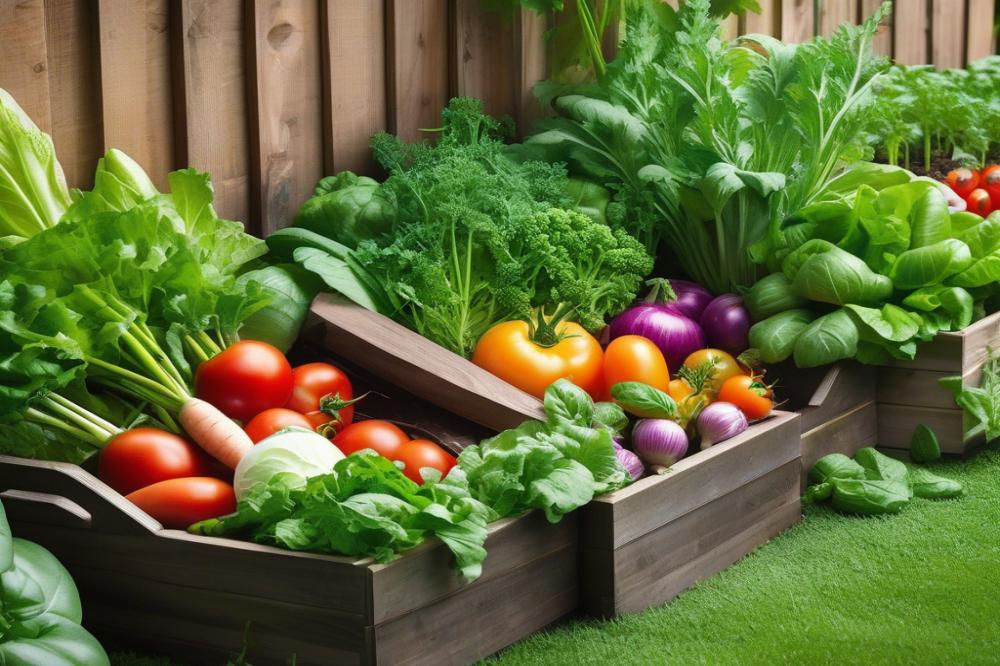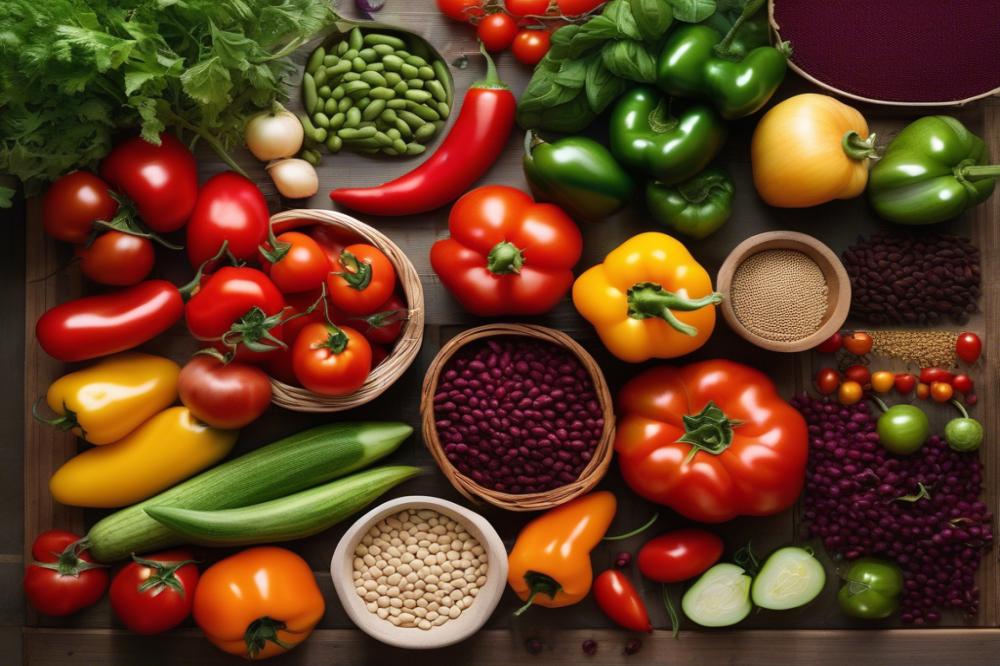Growing Opal Apples: A Gardener’s Guide
Opal Apples are a delightful fruit variety, known for their crisp texture and vibrant flavor. These apples are favored for their sweet, tropical taste, which stands out among many others. Passionate home gardeners love working with this apple type due to its child-friendly sweetness and resistance to browning. Their vibrant yellow skin appeals to those seeking aesthetic appeal in their orchards and gardens.
Many enthusiasts have been flocking to grow this particular variety, driven by its unique blend of excitement and simplicity. With a growing trend towards organic gardening, families want to harvest their own fresh fruit. Understanding successful gardening tips is key for anyone interested in apple cultivation. Every step, from planting to harvest time, can influence the health of these trees and the quality of the fruit.
Choosing the right soil requirements is vital. Healthy soil fosters strong roots and vigorous growth. Additionally, knowing the climate for apples is crucial in achieving a fruitful yield. Proper watering schedules help in sustaining robust trees. Recognizing effective pruning techniques will also aid in maximizing the harvest. Careful pest control is important, as it protects these delicate trees from common threats.
growing apples offers numerous rewards, but an informed approach is critical. Each choice in the gardening process needs thoughtful consideration. As you start your Opal Apples journey, embrace the adventure of nurturing your own fruit trees. By following the right practices, you’ll set yourself up for success and enjoy the fruits of your labor.
Understanding Opal Apples

Description of the Opal Variety
Opal apples have a striking golden-yellow skin. Their flesh is crisp and juicy, making them visually appealing. This apple variety was developed in the 1990s through cross-breeding with the Golden Delicious apple. Unique traits set these apples apart from others. They have a natural resistance to browning, allowing them to stay fresh when sliced.
Unique Flavor and Texture Compared to Other Apple Varieties
The flavor of Opal apples is mildly sweet with a hint of tartness. Many find this balance delightful. Unlike the overbearingly sweet flavors found in some other options, these apples offer complexity. Their crisp texture provides a satisfying crunch, making them ideal for snacking. Kids often enjoy their fresh taste. Additionally, the smooth skin resembles that of its parent, the Golden Delicious. This apple makes a perfect addition to lunchboxes or raw fruit salads.
Nutritional Benefits of Opal Apples
When considering healthy snack options, Opal apples deserve attention. They are rich in dietary fiber, promoting digestive health. This apple variety also contains vitamin C, which supports the immune system. People looking for low-calorie snack choices will appreciate them. Packed with antioxidants, these fruits assist in overall health. Anyone interested in organic gardening will find them an excellent choice for cultivation. Regular consumption can contribute to a balanced diet.
Whether you are growing apples for personal use or commercial purposes, these fruits have much to offer. Incorporating them into different meals can add flavor and nutrition. Enjoy them plain, with nut butter, or baked in desserts. gardening tips can help with their cultivation, ensuring optimal growth and productivity. Remember, the right climate for apples plays a critical role in successful harvest time.
Selecting the Right Location for Growing

Choosing the right spot for your apple trees is vital. The climate for apples plays a pivotal role in their overall health and productivity. Apples thrive best in areas with temperate climates. Regions with cold winters and warm summers are ideal. Without proper climate conditions, trees may struggle to grow and produce quality fruit.
Soil requirements significantly influence growth. Well-draining soil is essential for healthy roots. Sandy loam or clay loam are good choices. The pH level of the soil should range from 6.0 to 7.0. Conducting a soil test can help identify nutrient needs. Rich, organic matter can enhance fertility. Compost is great for building up the soil’s health. These elements contribute to strong trees and a healthy crop.
Sunlight is another critical factor for growing apples. Fruit trees require full sun to maximize their yield. A sunny area offers at least six to eight hours of direct sunlight daily. Along with sunlight, air circulation must not be ignored. Good airflow helps prevent diseases. Planting trees too closely can lead to issues with moisture retention and fungus. Observing the surrounding landscape can provide clues about air movement.
Consider the slope of the land too. A slight incline facilitates drainage, which is beneficial for root systems. Keep in mind local weather patterns. For instance, avoid planting in low spots where frost may settle. Frost can damage blossoms and delay harvest time. Additionally, pay attention to the proximity of other plants. Companion planting can be advantageous in organic gardening, but too many neighboring trees may crowd your apples.
Understanding how to manage pests is also key. An open, airy environment discourages pest infestations. With good pest control, your fruit trees can remain healthy. Learning about pruning techniques enhances tree structure. This practice also increases fruit production by allowing more light to penetrate through the branches.
Choosing the proper location takes time and knowledge. Assessing these factors carefully can lead to a bountiful harvest of flavorful fruit. Each step taken in planning can make a difference in your apple-growing journey.
Planting Opal Apples

Best Times for Planting
Spring is usually the ideal time for planting apple trees. Ground temperatures have warmed, which promotes new growth. Alternatively, fall can also be suitable in some regions, allowing the tree roots to establish before winter. Observing local climate patterns is key. Choose a time when the risk of frost has passed, as young trees are particularly vulnerable.
Step-by-Step Planting Techniques
Preparing the site is essential before placing the tree in the ground. First, select a sunny location that receives at least six hours of direct sunlight each day. Next, test the soil for drainage and acidity. Dig a hole twice as wide as the root ball. The depth should match the height of the roots to avoid stress. Position the tree in the hole and gently spread out the roots. Fill with soil, firming it lightly as you go. Water thoroughly after planting to help settle the soil. Mulching can help retain moisture and suppress weeds.
Importance of Proper Spacing for Fruit Trees
Spacing is critical for overall health and productivity. Apple trees require room to grow and thrive. When planting multiple trees, consider their mature size and spread. If they are too close together, competition for sunlight and nutrients can occur. This can lead to poor fruit production and increased pest issues. A good rule of thumb is to place trees at least 15 to 20 feet apart. Proper distance allows air circulation, reducing disease risk. Spacing creates an environment for healthy growth and contributes to a successful harvest time.
Care and Maintenance
Nurturing Opal Apple trees starts with understanding their specific needs. These fruit trees prefer well-drained soil to thrive. Good soil requirements are crucial for strong growth and better yields. Amending the soil with organic compost can enhance its structure and fertility. Soil pH should ideally fall between 6.0 and 7.0 for optimal results.
Key Gardening Tips
Pruning techniques play a vital role in maintaining tree health. Trim dead or diseased branches during the dormant season. This practice improves air circulation and encourages new growth. Thinning out excessive branches can also promote size and quality of apples. Timing is key; aim to prune in late winter or early spring before new growth starts.
Watering Needs
Watering, a critical part of apple care, helps establish strong roots. During the first few years, regular watering is essential to support growth. Once established, trees still prefer a consistent moisture level. Dry spells can lead to stress, so watch for signs such as leaf wilting. Using organic mulches can help retain soil moisture and suppress weeds.
Fertilizing Recommendations
The right balance of nutrients is necessary for healthy fruit production. A balanced organic fertilizer in early spring encourages robust growth as leaves emerge. You might consider a fertilizer that contains nitrogen, phosphorus, and potassium. These elements support overall health and fruit development. Over-fertilization can harm trees, so follow package instructions carefully.
Pest Control
Insects and diseases can pose challenges to apple cultivation. Adopting organic gardening practices can mitigate these threats effectively. Regular monitoring of leaves and fruits helps catch problems early. Introducing beneficial insects, like ladybugs, can offer natural pest control methods. Early intervention is key to keeping your trees healthy and productive.
Climate Considerations
A suitable climate is important for growing apples successfully. These trees flourish in regions with cold winters and moderate summers. Ensure the average temperature does not exceed their tolerance levels. When planting, choose varieties suited for your local conditions to maximize harvest time and quality. Each apple variety may have its specific requirements, so always research before planting.
Pruning Techniques
Pruning plays a crucial role in the healthy growth of apple trees. Gardeners should recognize that it helps in shaping the tree and removing any dead or diseased branches. When done correctly, pruning encourages the development of strong branches that can support fruit production. Healthy growth also limits pests and diseases, which can affect the overall yield.
Timing is key when it comes to pruning. Generally, late winter or early spring is the best time to start. At this point, the tree is still dormant. Pruning during dormancy allows for better healing and growth once temperatures rise. Some methods include thinning cuts that reduce crowding and heading cuts that shorten branches. Each method has its purpose and should be chosen carefully, depending on the desired outcome.
Understanding how pruning impacts fruit production is crucial for success. Removing excess branches increases light penetration and air circulation. This can lead to a more abundant harvest time. When light reaches the inner parts of the tree, it can improve the quality of the fruit. Additionally, a well-pruned tree can facilitate better pest control, reducing the need for chemical treatments.
Different apple varieties may have unique pruning requirements. Specific techniques may be more effective for Opal Apples compared to traditional varieties. It’s essential for gardeners to research the specific needs of their fruit trees. Soil requirements also play a role in the overall health and structure of the tree, affecting how and when to prune successfully.
In organic gardening, techniques must also consider environmental factors. Minimizing chemical use promotes healthier growth and a better ecosystem. A balanced approach of pruning and maintaining a suitable climate for apples will yield positive results. Gardeners should regularly monitor their trees to make informed decisions about when and how to prune effectively.
Pest Control
Common Pests Affecting Opal Apples
Growing apples can be rewarding, but certain pests pose challenges. The most common pests include apple maggots, codling moths, and aphids. Apple maggots create small holes in the fruit, ruining its appearance. Codling moths burrow into the apples, leading to damage inside. Aphids, tiny but numerous, suck sap from the leaves, stunting growth. Keep an eye out for these pests as they can quickly reduce the harvest time.
Organic Pest Control Strategies
Using organic gardening methods is a great way to manage these pests. Insecticidal soap can effectively control aphids. This solution is safe for the environment and won’t harm beneficial insects. Alternatively, diatomaceous earth creates a barrier that pests find difficult to cross. Traps can also help. Hang codling moth traps around your trees to catch them early. If infestations occur, consider introducing beneficial insects like ladybugs; they prey on aphids and other pests.
Preventative Measures to Protect the Trees
Taking preventative measures reduces the risk of pest invasion. Regularly scouting for signs of trouble is essential. Proper pruning techniques improve air circulation and light exposure within the tree. This makes it less inviting for pests. Additionally, maintaining healthy soil requirements supports robust trees. Healthy trees are more resilient against pests. Finally, consider the climate for apples. In regions with high humidity, keep foliage dry by watering at the base of the tree. Keep these tips in mind for thriving fruit trees.
Harvesting Opal Apples
Signs of Readiness for Harvest Time
Determining when to pick apples requires careful observation. A slight color change indicates they are ready. Look for a golden-yellow hue on the skin of the fruit. Also, apples should feel slightly soft when pressed gently. The firmness tells you they are ripe. Another sign is the ease at which they detach from the tree. A simple twist or lift should cause them to come off easily. If they are hanging on tightly, they might not be ready yet. Watch for a sweet aroma as an additional indicator of ripeness.
Best Practices for Picking Apples
Picking apples requires a soft touch. Use both hands to support the fruit when removing it from the tree. This minimizes bruising and damage. It’s wise to wear gloves if you’re concerned about dirty hands, especially when working in organic gardening. When collecting, put apples in a basket or a padded bag for protection. Avoid tossing apples into containers; this can cause injury to the fruit. As you gather, check each apple for pests or blemishes. Healthy apples should be smooth and free from dark spots.
Storing Techniques to Maintain Freshness
After harvesting, proper storage becomes essential. Store apples in a cool and dark place to extend their life. A temperature around 30 to 35 degrees Fahrenheit works best. Basements or the coolest part of your home are ideal. Ensure they are not stacked too high; air circulation is vital. It’s also key to keep them away from other fruits. Apples emit ethylene gas, which can speed up the decay of surrounding produce. If you decide to refrigerate, open the bag slightly for airflow. Thus, retaining crispness is simple with these tips.
Final Thoughts on Cultivating Fruit Trees
Recapping key aspects is essential for success when it comes to cultivating this apple variety. Proper sunlight, sufficient watering, and attention to soil health are crucial elements that can lead to a fruitful harvest. Regular pruning helps maintain the tree’s shape and promotes better air circulation. Additionally, protecting your tree from pests and diseases can safeguard your efforts from being in vain. Creating a nurturing environment is vital.
Many gardeners find joy in trying out new fruit trees. Think about adding Opal Apples to your garden. These trees not only enhance beauty but also yield delicious fruit. Satisfaction from nurturing an apple tree can be a fulfilling experience. Sharing fresh produce with friends and family brings an added layer of happiness.
Embrace the journey of growing apples. Fruit trees can transform any garden into a lush oasis. As seasons change, you’ll witness the fruits of your labor, quite literally. There’s a certain magic in seeing your efforts come to fruition. Utilizing these gardening tips will pave the way for success, making every moment spent in the garden worthwhile. Enjoy the experience, and happy gardening!



